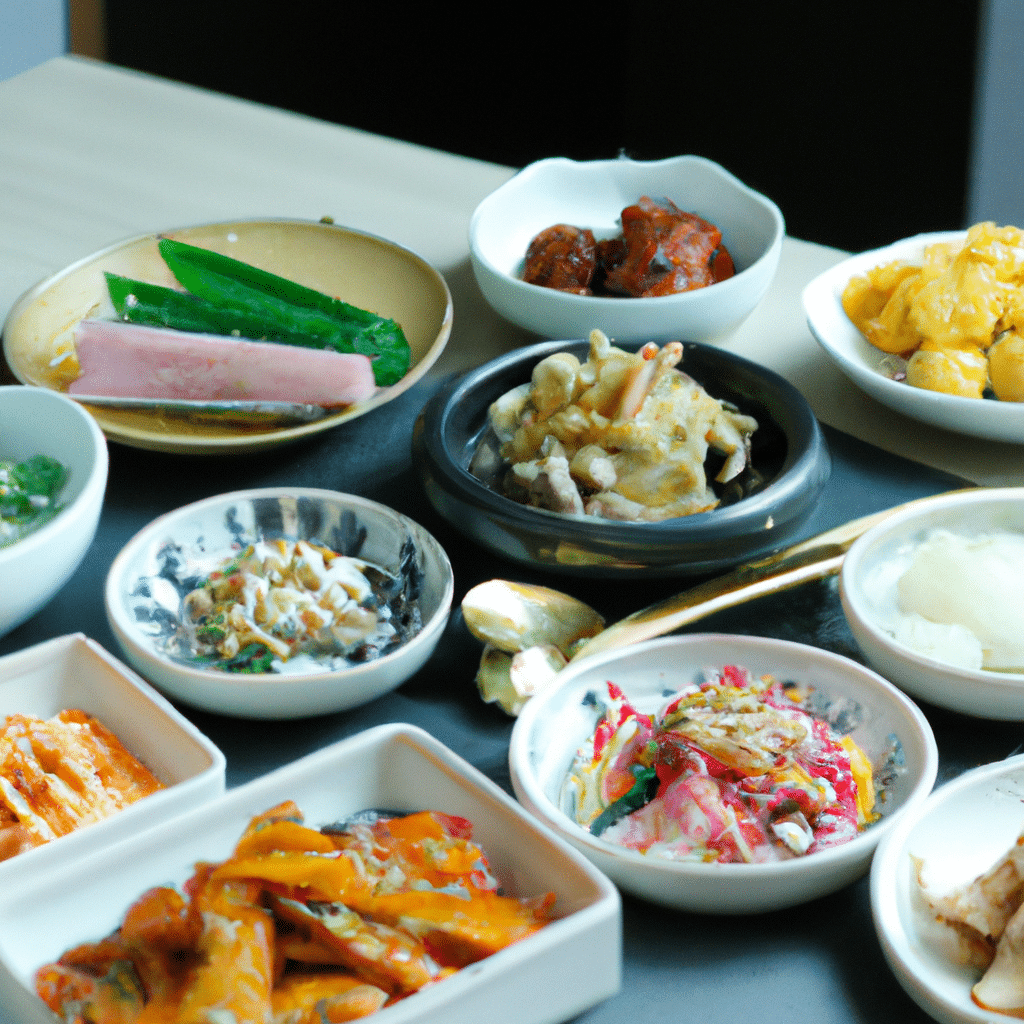Welcome to our comprehensive guide on the art of pairing unique side dishes with traditional Korean classics. In this article, we will delve into the rich culinary heritage of Korea, exploring the vibrant flavors and diverse textures that make Korean cuisine so renowned worldwide. Join us on this gastronomic journey as we uncover the secrets behind the perfect harmony of bibimbap, bossam, and their accompanying side dishes.

The Essence of Korean Cuisine
Korean cuisine is a delightful fusion of bold flavors, colorful ingredients, and meticulous preparation techniques. Rooted in centuries of tradition, it is a testament to the country’s deep cultural heritage. From the sizzling barbecues of samgyeopsal to the comforting warmth of kimchi jjigae, each dish tells a story of its own.
Bold flavors are at the heart of Korean cuisine, with dishes often featuring a harmonious balance of sweet, salty, spicy, and tangy elements. The use of fermented ingredients, such as soy sauce and gochujang (Korean chili paste), adds depth and complexity to the dishes, elevating them to a whole new level of deliciousness.
The Allure of Bibimbap
A Brief History
Bibimbap, which translates to “mixed rice,” is a classic Korean dish that has stood the test of time. With origins dating back to the Joseon Dynasty, bibimbap has evolved over the years, incorporating different regional variations and innovative twists.
The Perfect Combination
At first glance, bibimbap may seem like a simple rice dish topped with an assortment of vegetables, meat, and a fried egg. However, its true beauty lies in the meticulous arrangement and precise balance of flavors.
Traditionally, bibimbap is served in a hot stone bowl, which imparts a delightful crunch to the rice at the bottom. The vibrant vegetables, such as carrots, spinach, bean sprouts, and mushrooms, bring a burst of freshness and color to the dish. The addition of thinly sliced beef or tofu provides a satisfying protein component.
To enhance the flavors, a dollop of gochujang is added, infusing the dish with a spicy kick. Mixing all the ingredients together creates a delightful medley of textures and tastes, making each bite a truly memorable experience.
Pairing with Side Dishes
No bibimbap experience is complete without a selection of side dishes, known as banchan, to accompany it. Banchan are an integral part of Korean cuisine, adding depth and variety to every meal.
From the tangy crunch of pickled radishes to the savory delight of soy-marinated tofu, banchan offers a diverse range of flavors and textures that complement the main dish. The combination of different side dishes with bibimbap creates a harmonious symphony of tastes, elevating the overall dining experience.
The Delight of Bossam
A Traditional Delicacy
Bossam is a beloved Korean dish that showcases the country’s expertise in the art of slow-cooking and flavor infusion. Translating to “wrapped” in Korean, bossam is a dish that centers around tender, succulent pork belly.
The Perfect Marriage
To create the perfect bossam, the pork belly is first boiled with various aromatics, such as ginger, garlic, and scallions, to infuse it with flavor. The meat is then thinly sliced and served alongside fresh lettuce leaves, perilla leaves, and kimchi.
The beauty of bossam lies in the act of wrapping the pork belly and accompanying ingredients in a lettuce leaf, creating a delightful bundle of flavors and textures. The crispness of the lettuce, the fragrance of the perilla leaf, and the tanginess of the kimchi all come together to create a harmonious marriage of taste.
Pairing with Side Dishes
Similar to bibimbap, bossam is traditionally accompanied by an array of banchan. The side dishes not only add variety to the meal but also provide a refreshing balance to the richness of the pork belly.
From the fiery heat of spicy cucumber salad to the earthy goodness of stir-fried mushrooms, the side dishes elevate the bossam experience to new heights. Each bite becomes a delightful exploration of flavors, with the different banchan enhancing the overall enjoyment of the dish.
Conclusion
In conclusion, the art of pairing unique side dishes with traditional Korean classics such as bibimbap and bossam is an integral part of the Korean culinary experience. The careful selection and combination of banchan not only enhance the flavors of the main dishes but also create a symphony of tastes that delight the palate.
Through the vibrant colors, bold flavors, and meticulous preparation techniques, Korean cuisine continues to captivate food enthusiasts around the globe. So, whether you’re savoring the mixed rice goodness of bibimbap or indulging in the tender delights of bossam, don’t forget to explore the world of banchan to truly unlock the rich tapestry of flavors that Korean cuisine has to offer.
Embark on a culinary adventure and discover the wonders of Korean cuisine today. Let the art of pairing unique side dishes with traditional classics transport you to a world of bold flavors and unforgettable dining experiences.
